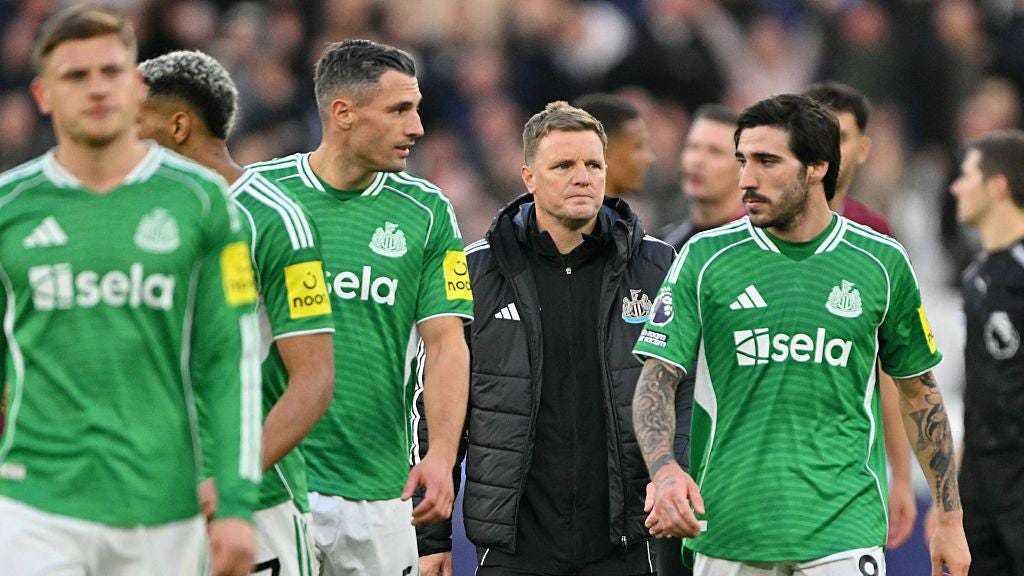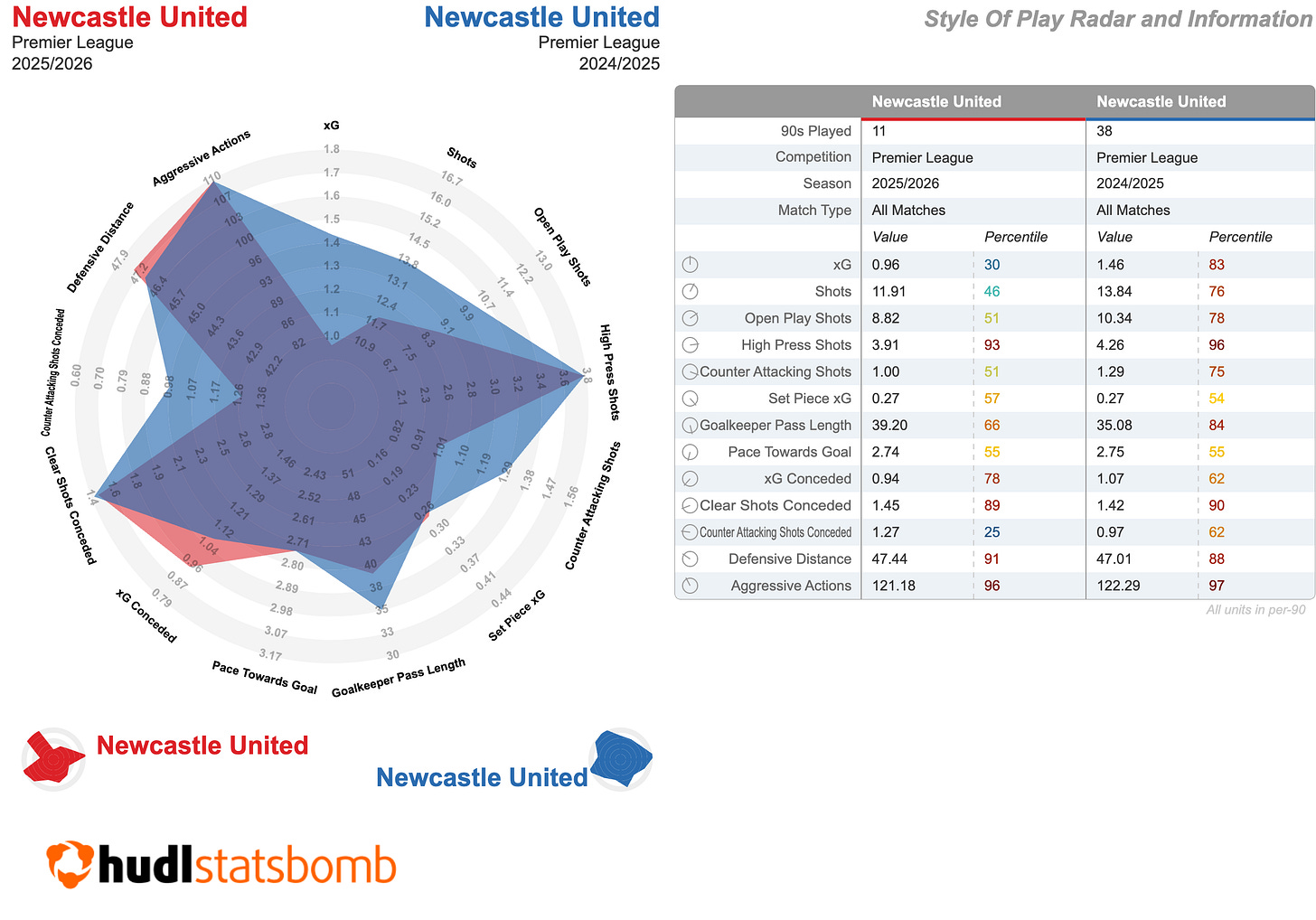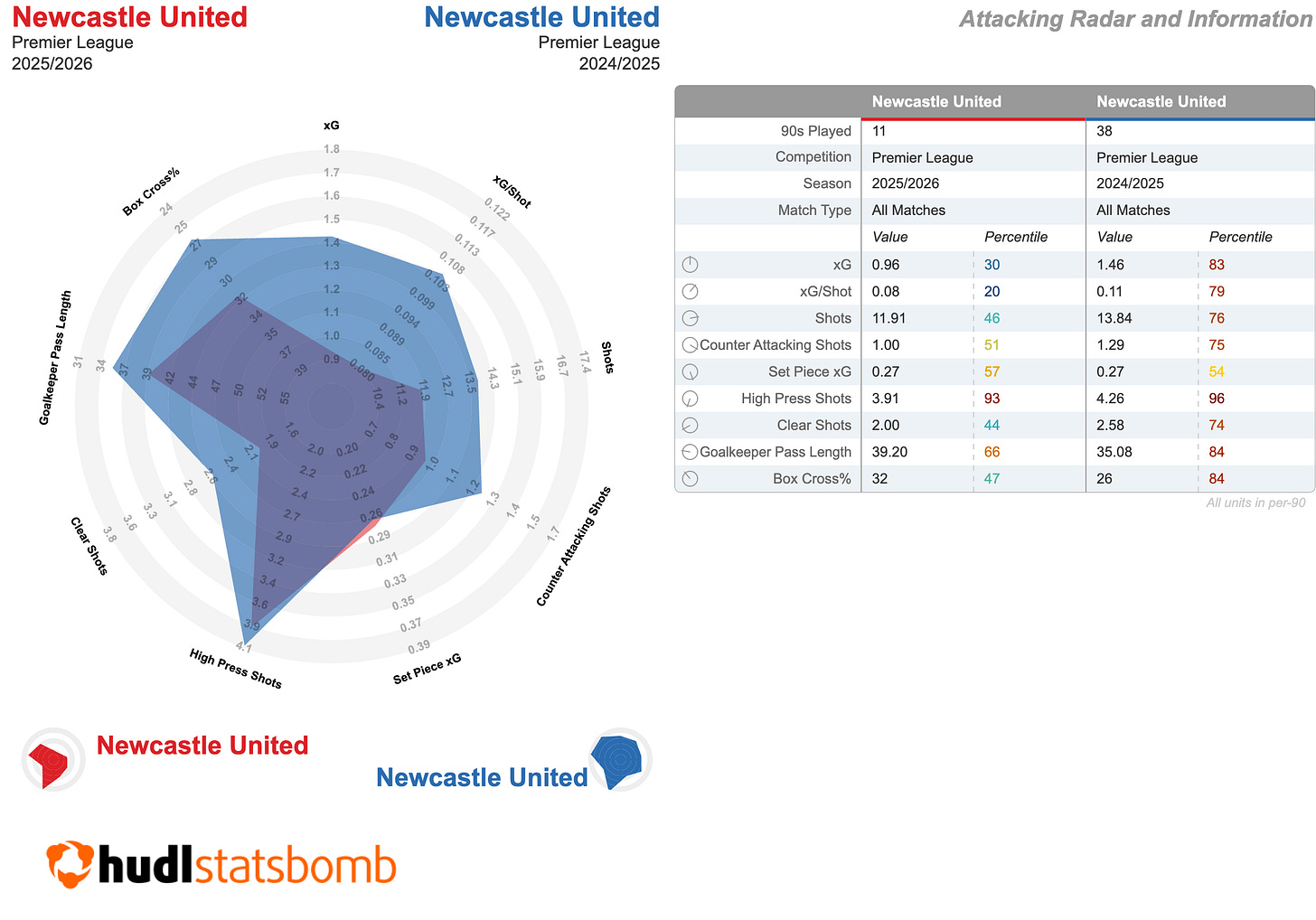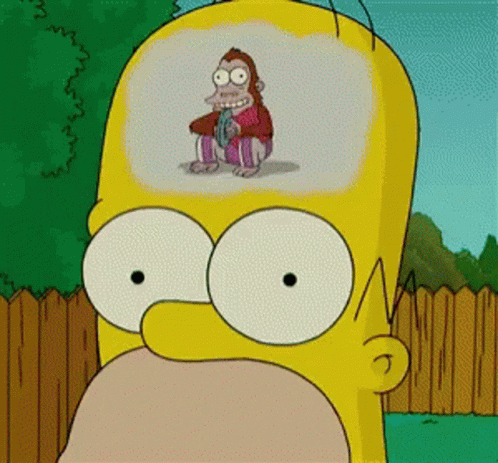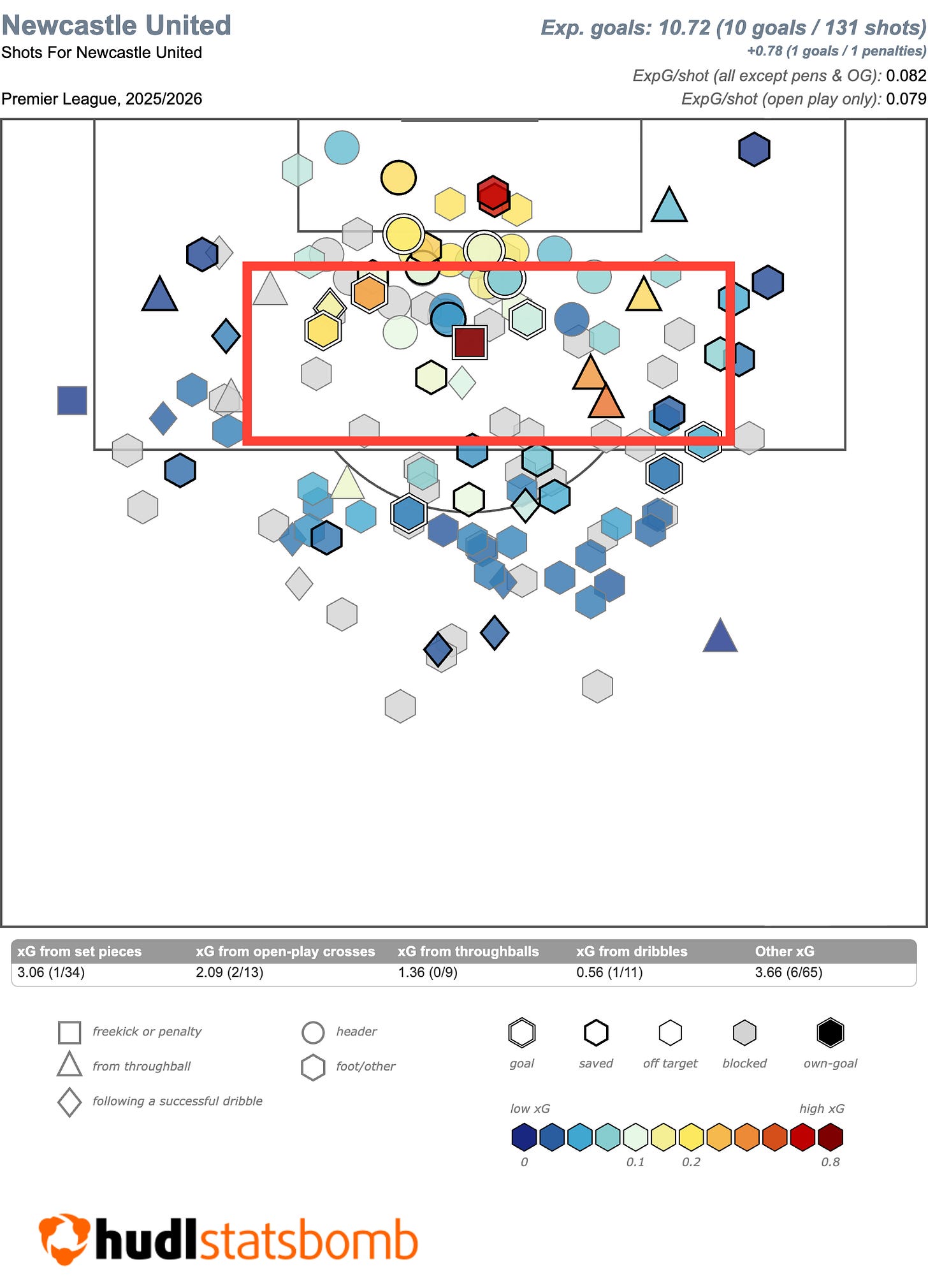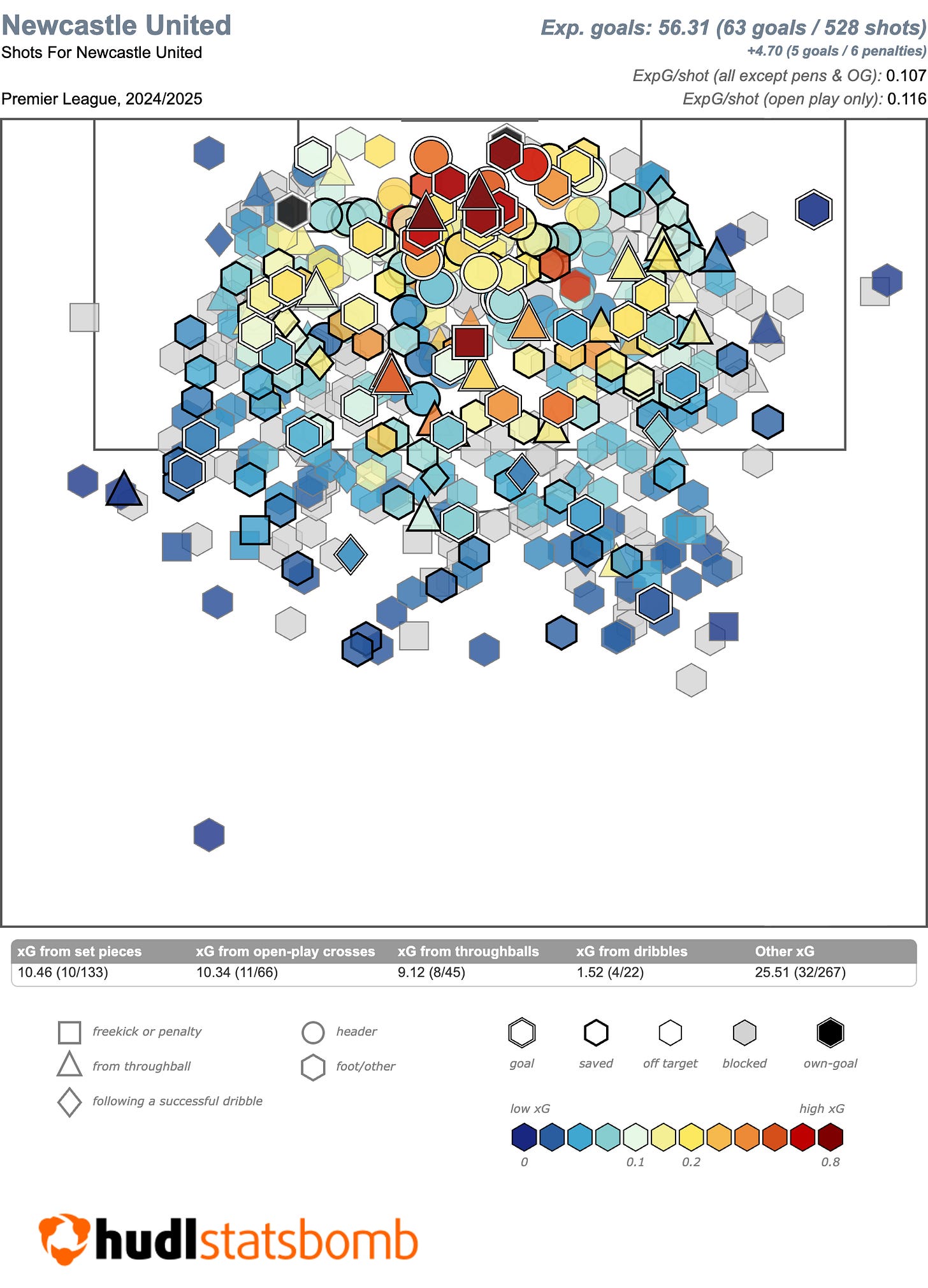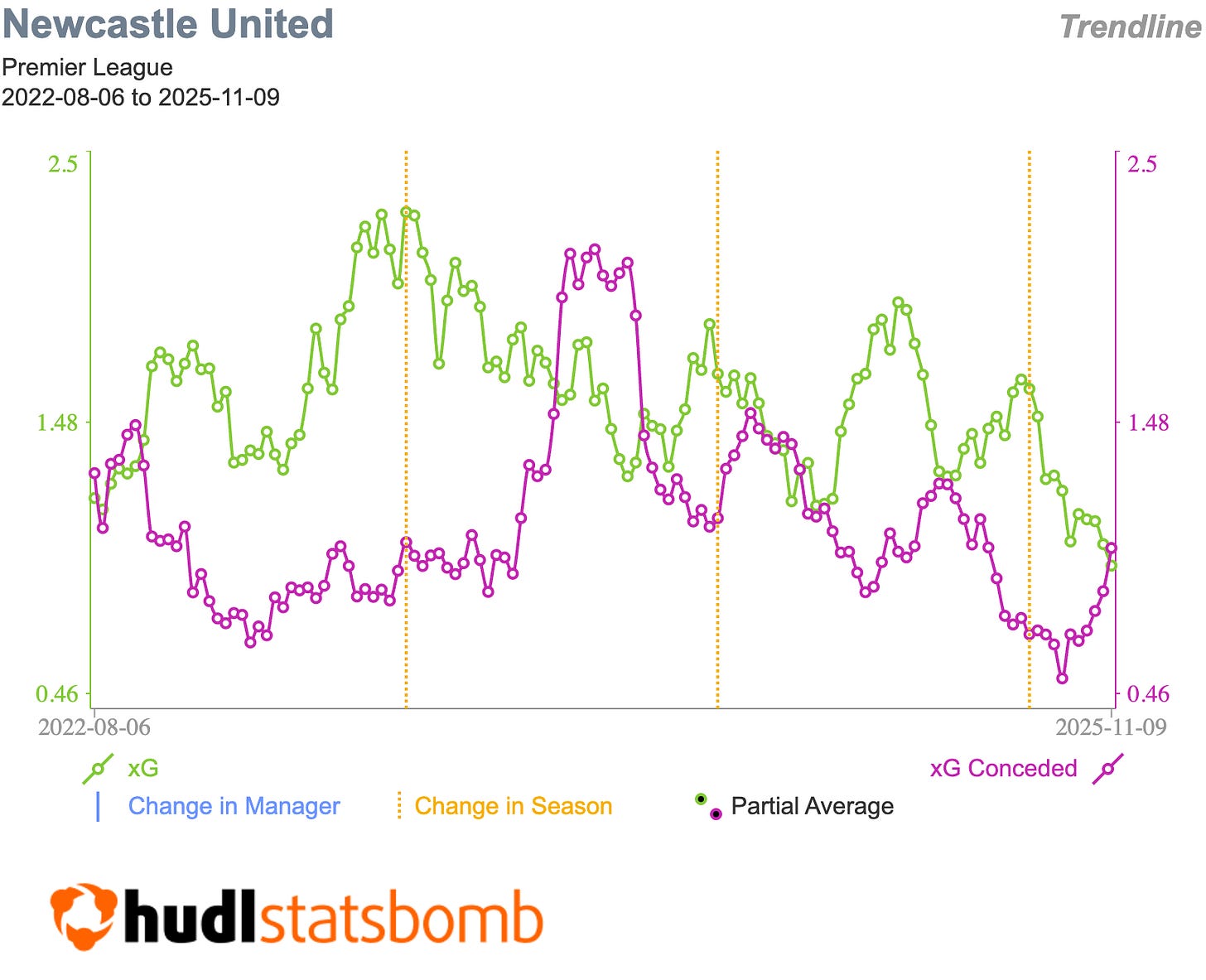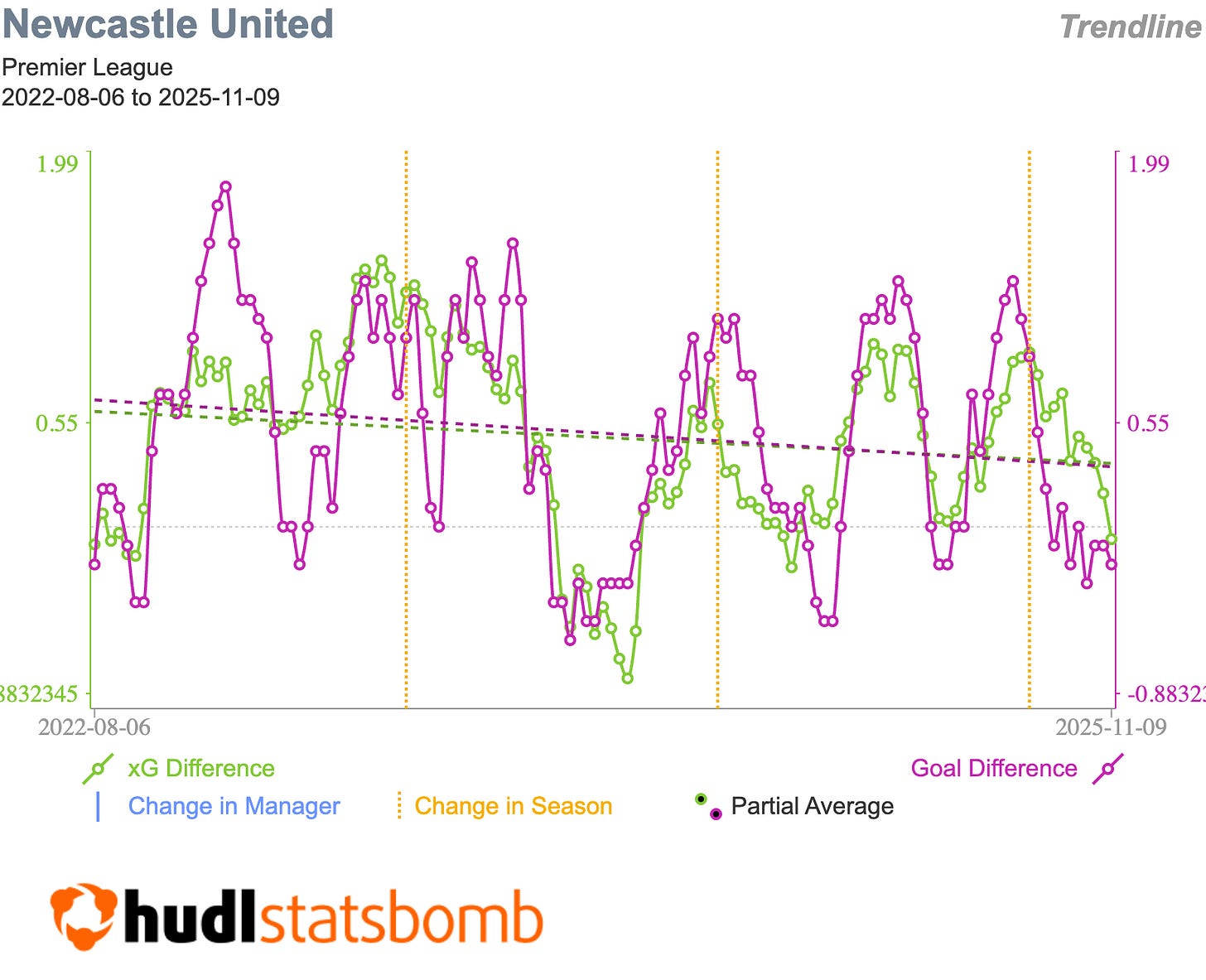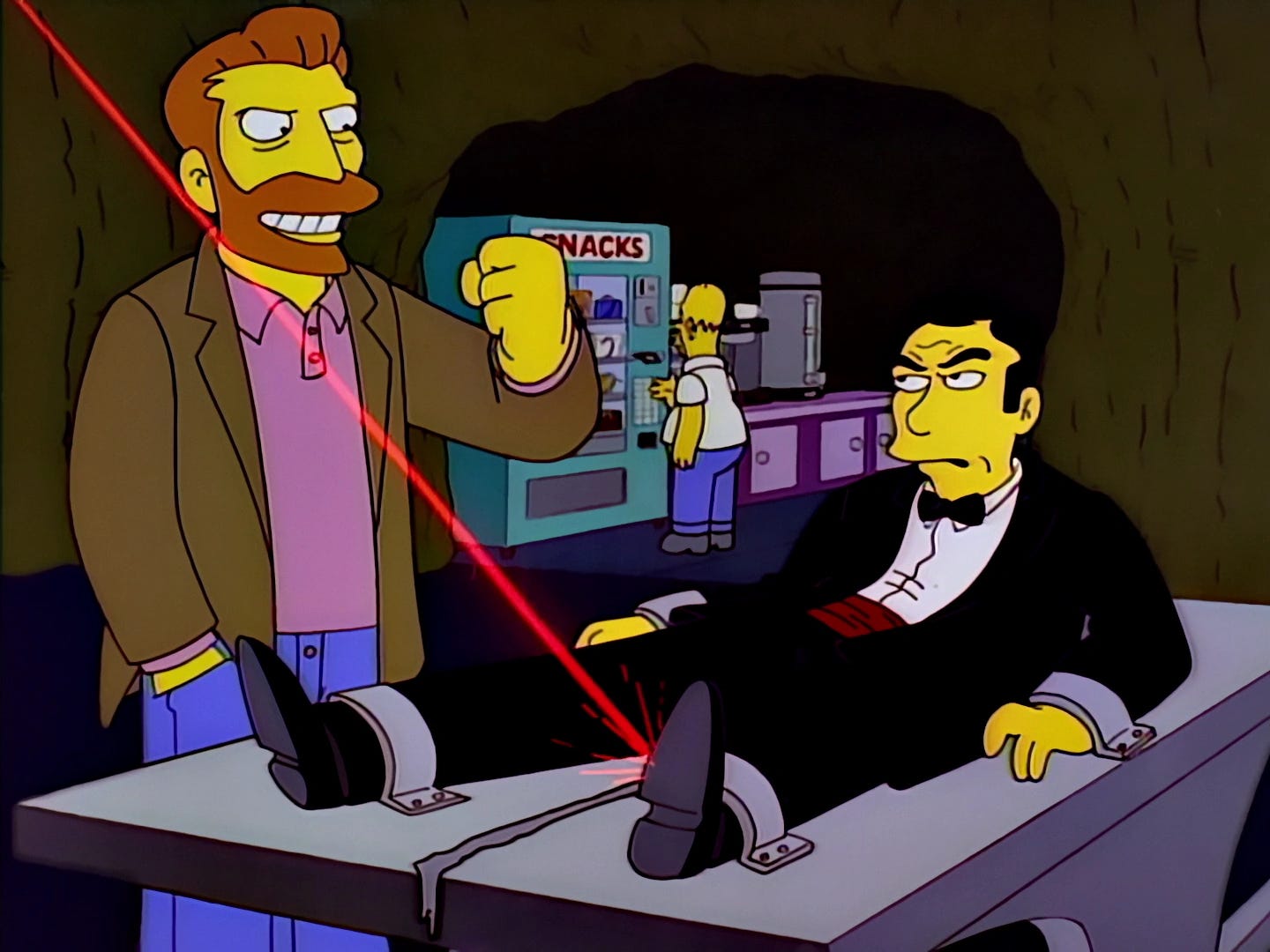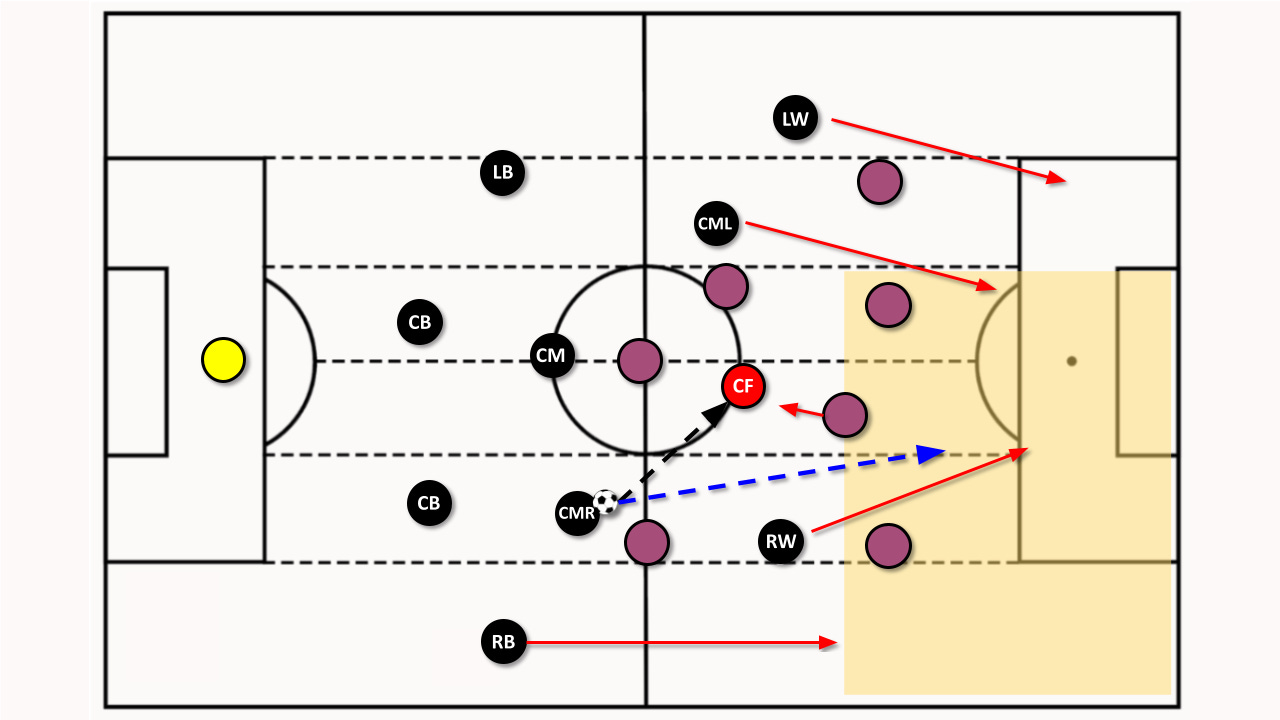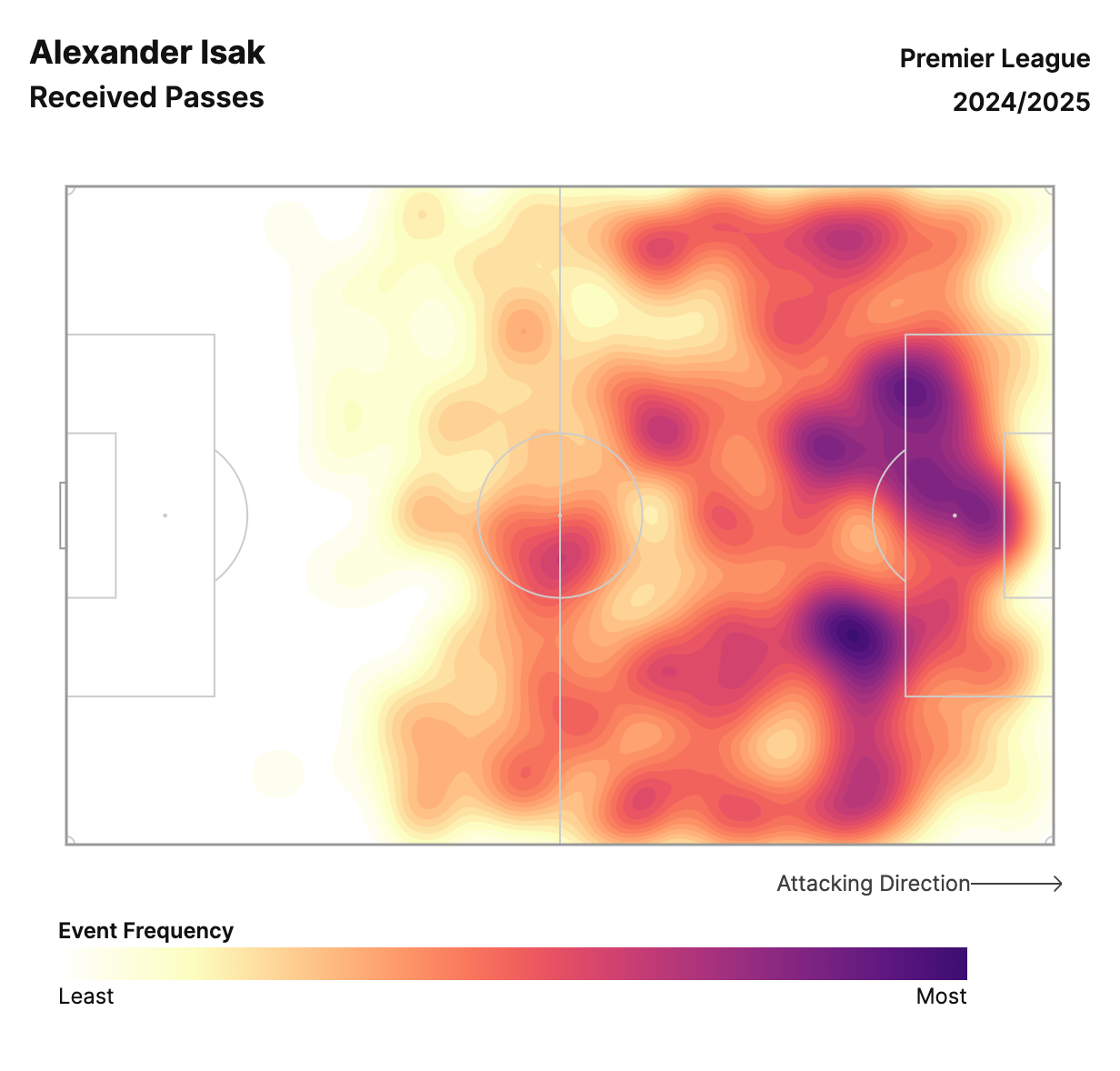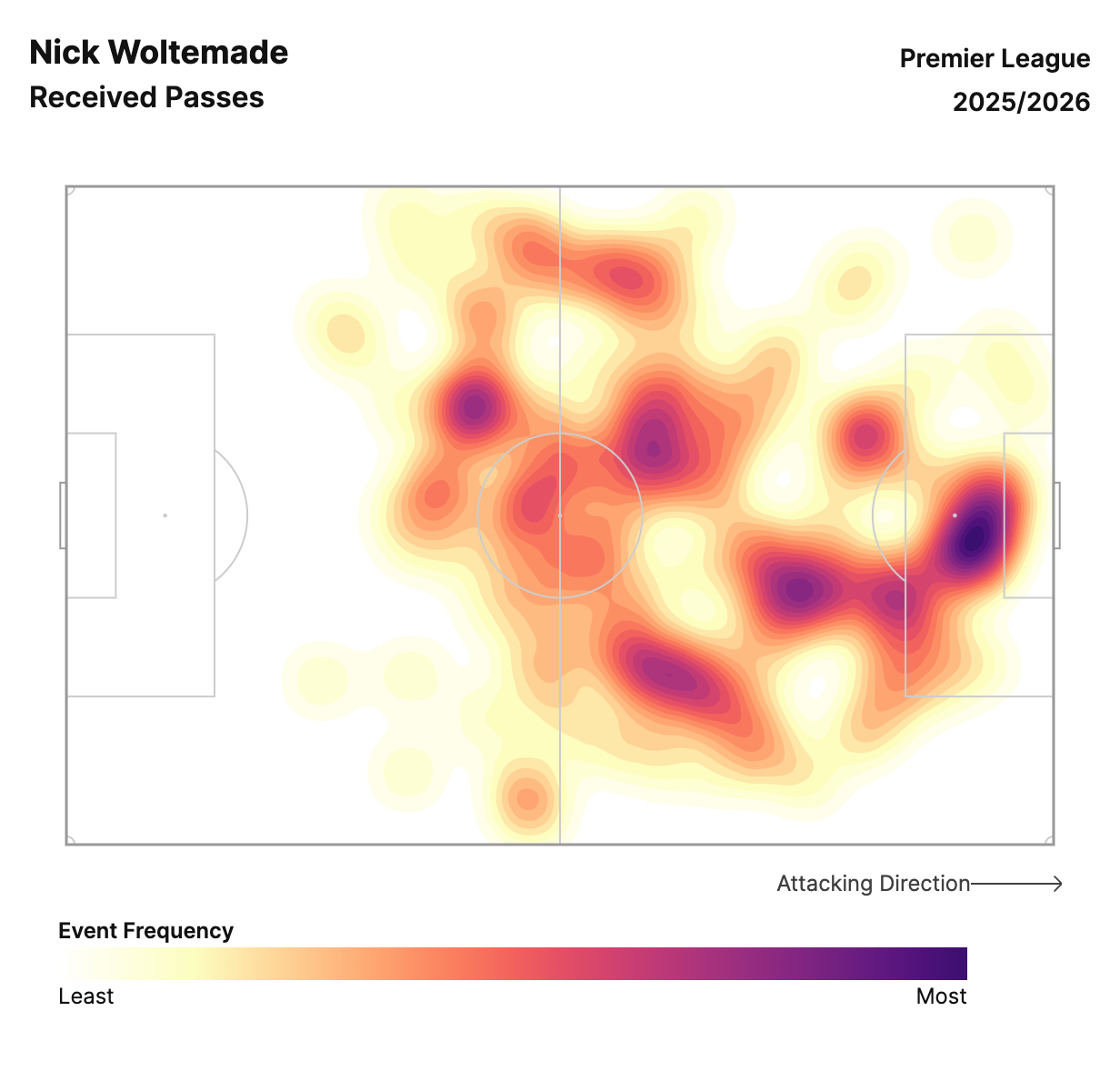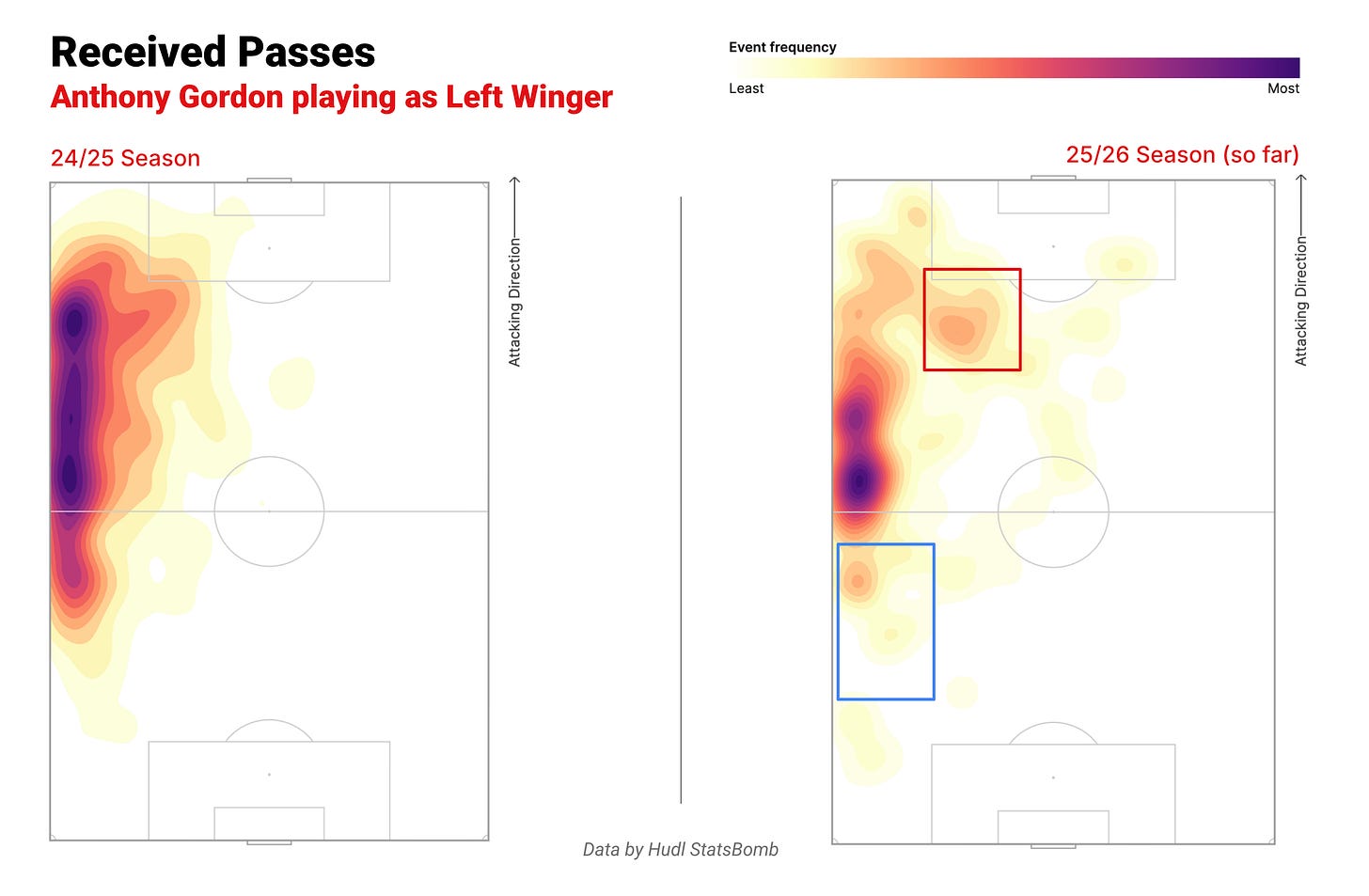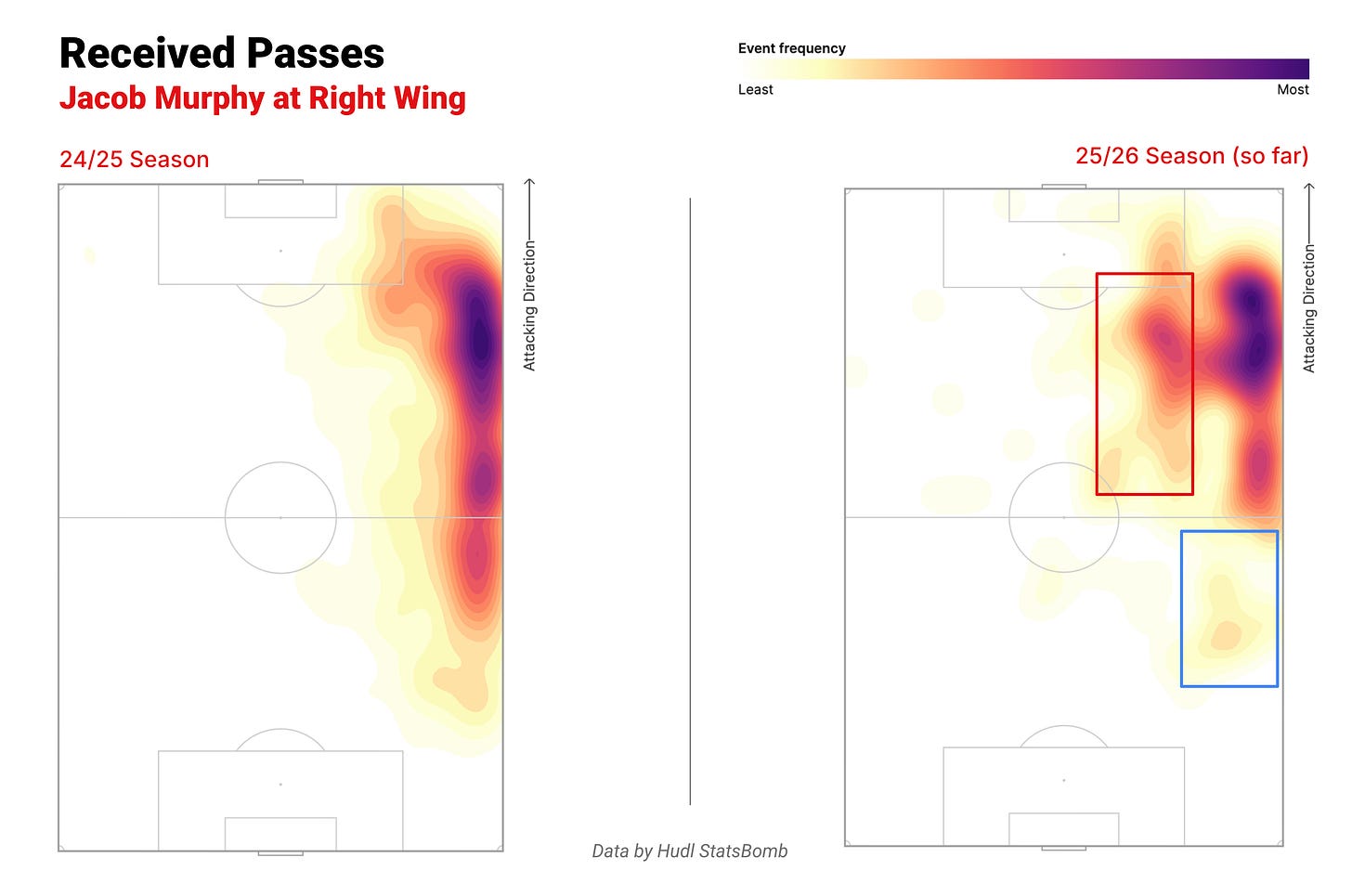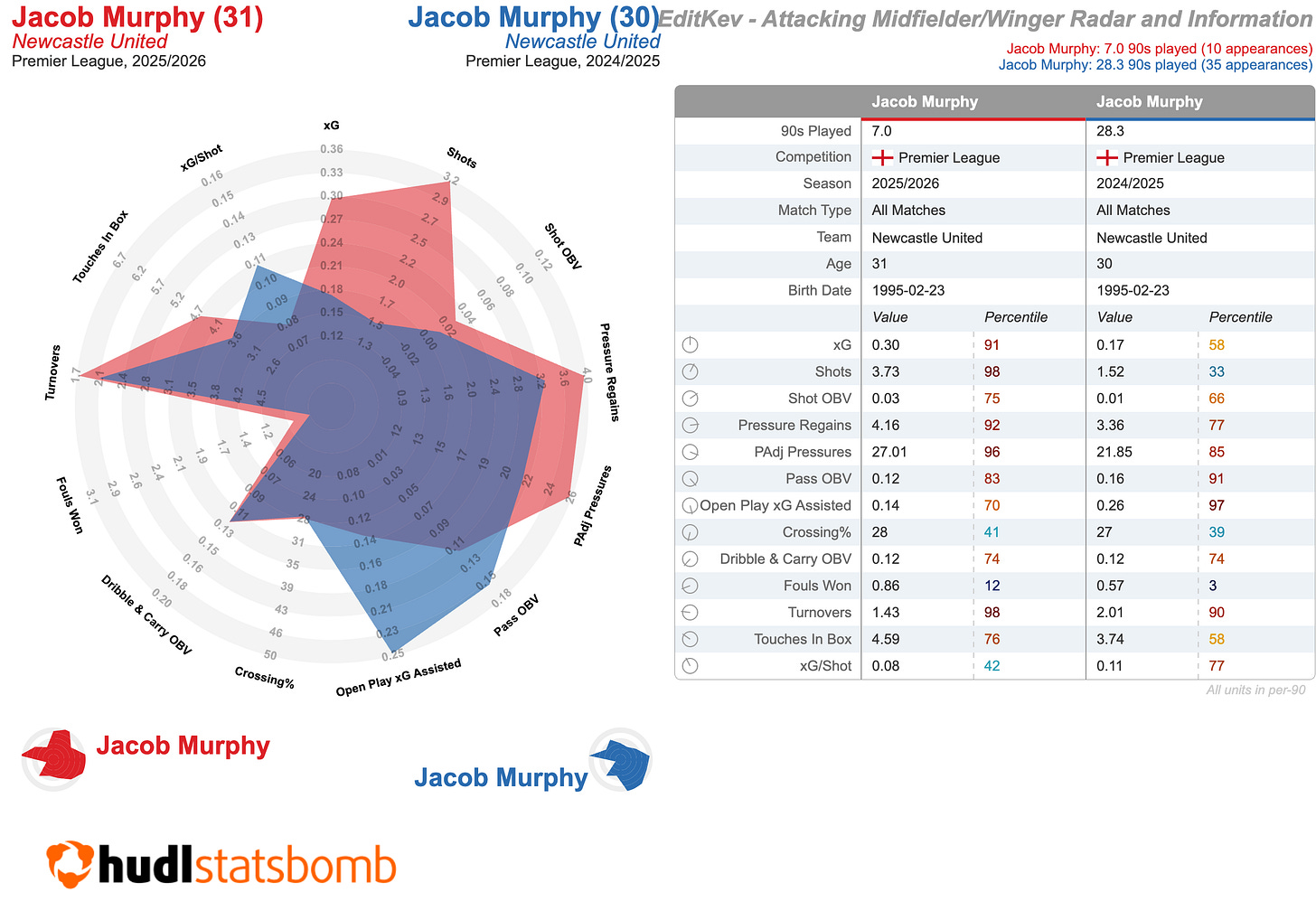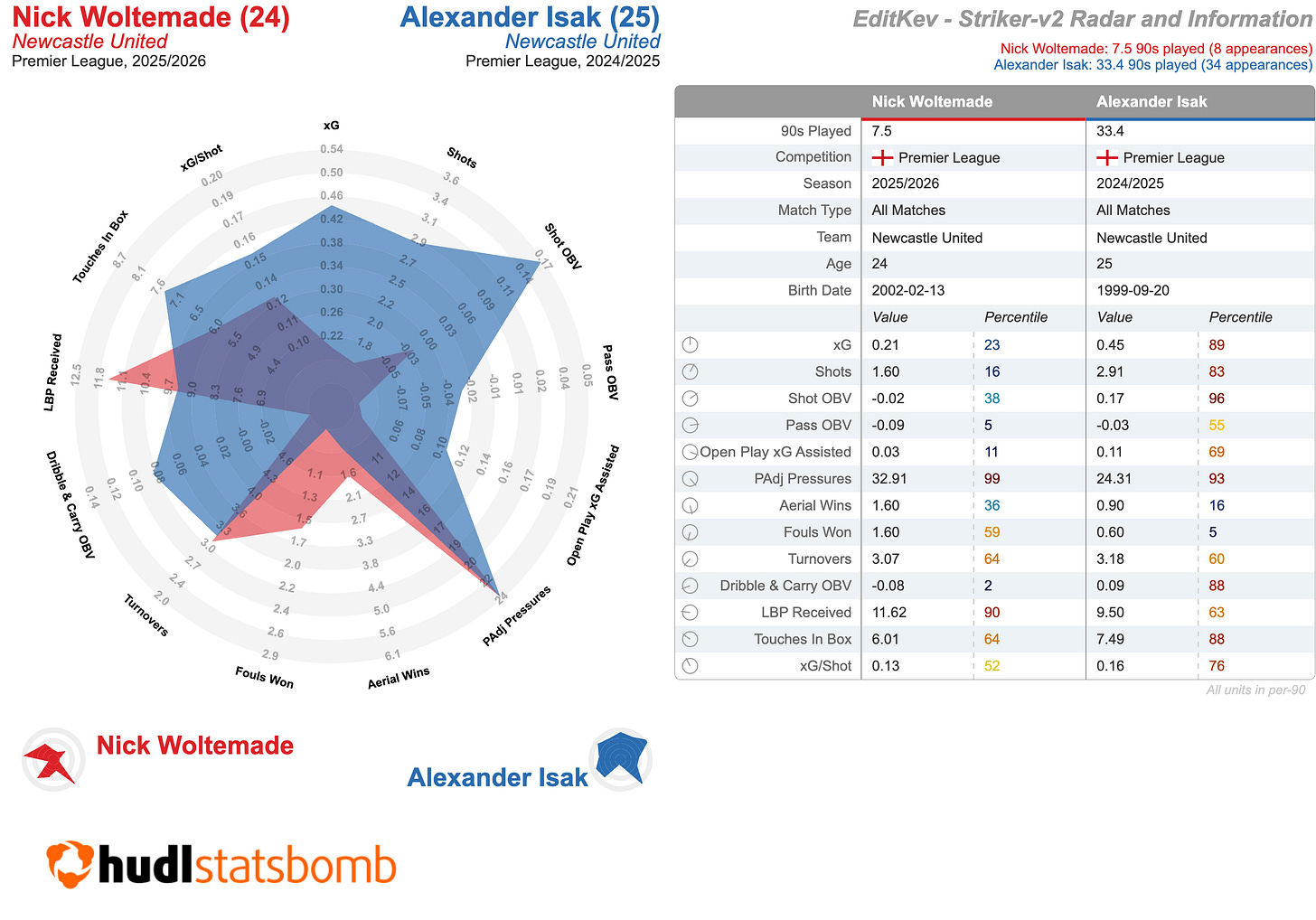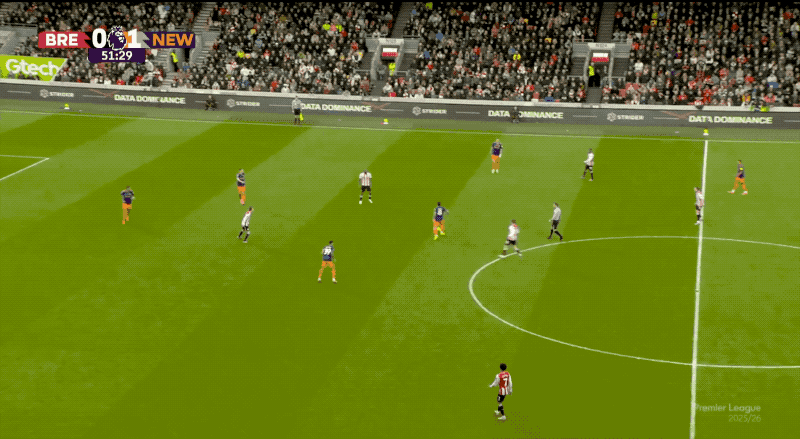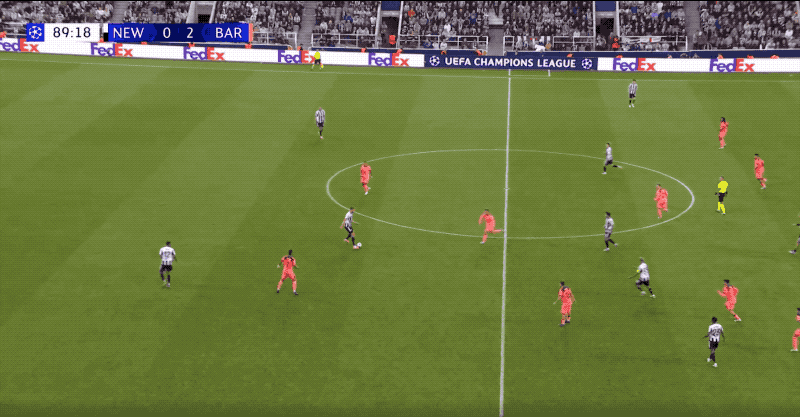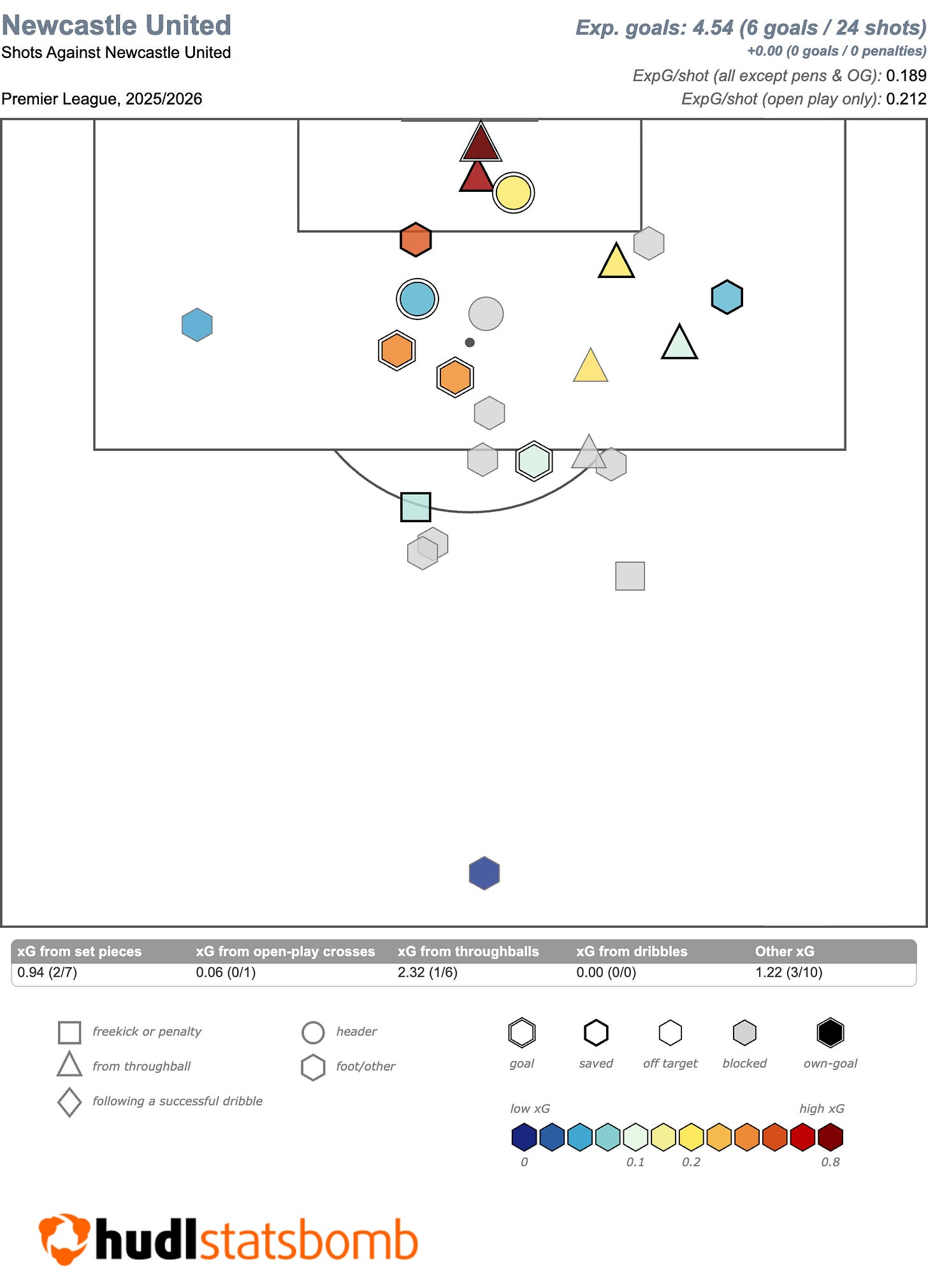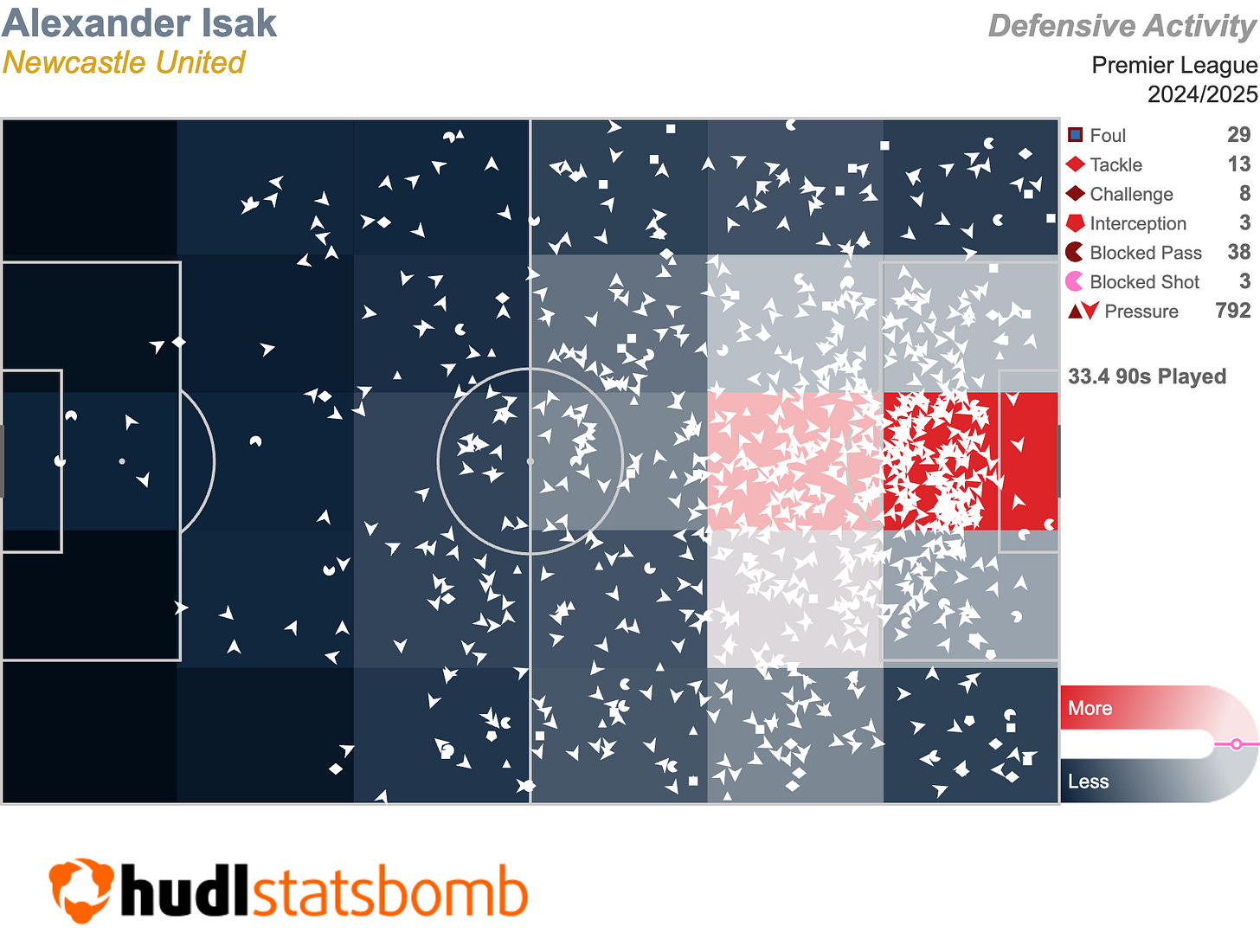Newcastle United's Misfiring Attack Is Derailing Their 25/26 Season.
A stats-led look at why Newcastle’s blunt attack currently points to a mid-table finish, and what that means for Eddie Howe.
There was a moment in the loss at Brentford when even some fans who would describe themselves as ‘Happy Clappers’ or ‘Loyalists’ had their faith in Eddie Howe shaken. When Dan Burn got his marching orders for giving away a penalty that led to the second goal in the 3-1 defeat, it was a moment when a manager - whose mistakes have been outweighed by the things he’s gotten right over the past few seasons - dropped a clanger when he needed it least.
In the aftermath of the defeat, more than a few fair-minded, level-headed fans slid into my DMs with: ‘I think it might be Howe’s last season.’ That result. That performance. And the one the week before at West Ham. Those were the games that were meant to tell us where we actually were in the pecking order this season.
Those two games were not just bad afternoons. They were part of a wider pattern that has been building across the start of the season, which Howe himself would describe as not good enough. This piece is not about picking a scapegoat. It is about looking at what has changed, what has stayed the same, pinpointing the reasons behind the changes, and what that tells us about where Newcastle United are right now.
What does the team’s performance data show?
Regular readers of this newsletter will be used to visualisations of player or team data to highlight changes in performances or play styles, and my custom Style of Play radar vis is a useful starting point for this analysis.
In the radar chart below, data from the 24/25 season 🔵 compared with the 11 games from the 25/26 🔴 season so far highlights that Newcastle are:
Generating 0.50 less Expected Goals (xG) and taking two fewer shots overall per game
Still generating a high amount of shots as a result of high pressing
Not creating as many shots in open play
Not creating as many counter-attacking shots
Are kicking the ball longer from Goal Kicks and moving the ball towards the opposition goal at a similar pace
Conceding fewer chances in defence overall (despite the last 2 games)
Conceding more counter-attacking shots
To anyone that has watched a lot of Newcastle United this season. There not much here regsiters as a surprise, especially in attack, which has looked disjointed, underbaked and has relied on set pieces/high press shots to stay afloat.
Take a closer look at the teams Attacking metrics this season 🔴 vs. last 🔵 and you see there’s more than a little tinkering needed to get things firing on all cylinders again. Not only has our shot volume decreased by nearly two shots a game, but average quality of each chance we’ve taken to shoot is down by just under third, with our xG per shot dipping to 0.08 from 0.11.
Fewer shots at from statistically worse opportunities to score is a horrific combo that signals that the underlying health of the attack needs to be addressed. For those of you who see the xG numbers and whose brain goes…
Here’s a better visual representation of how this maps to the pitch itself. Below you can see a map of all of the shots that Newcastle United have taken this season. With 10 open play goals from nearly 11 expected, we’re about on track for the season so far. Look at the density of shots from medium range in the red box.
Now compare this to the entirety of last season. While you’d expect this area to fill out as the season rumbles on, the lack of mid-range shots (and the subsequent shots that follow scuffed efforts, blocked shots, palmed GK saves, etc) needs to be addressed.
The issue is so bad that the attack is creating chances at its worst rate at any point under any full season with Howe in charge. Below you can see a 10-game rolling average of Newcastle’s xG for 🟢 and against 🟣. While there are always some fluctuations here as players/the team go in and out of form, we need to find the half-a-goal’s worth of daylight between the quality of chances created vs. conceded so that we’re not relying on the defence to be perfect and winning a 50:50 coin flip to win games.
Occasionally on social, I get people who insist that xG doesn’t matter, so here’s a little more evidence as to why it does and why clubs at all levels of the game across the world use it to help guide their decision-making.
Here is another 10-game rolling average of xG difference 🟢 and actual goal difference 🟣 compared to one another. While there are gaps where the team goes on a finishing hot streak (can you spot Almiron’s purple patch?), the two metrics show a strong relationship to one another.
Take a look at this season so far, you can see we’re behind our goal difference generally this season, which is scant comfort when you’re just above the relegation zone, but hints that with a tiny bit of a fairer wind, we would already have a few more points on the board.
Why is Newcastle’s attack misfiring?
So what has happened to turn the league’s 4th most potent attack (1.46xG per game) in 24/25, morphed into the league’s 7th worst () in a matter of months?
Well, like most things in life and football, it’s never just one thing, but if you nailed me to a steel table and threatened to kill me like or Scorpio unless I committed to one, I’d say: “It’s growing pains of replacing Isak with Woltemade.”
While obviously, as fans we ALL love that Big Nick Energy and have fallen out with the Striker from Sweden, they are markedly different types of strikers. They bring different qualities to the role of being a central striker within Newcastle United’s typical 4-3-3 system.
It was something I highlighted in my newsletter about the German forward when he signed.
Woltemade’s tendency to drop towards the ball and play with his back to goal will change the nature of Howe’s attack. Woltemade’s strength and outstanding ability to pin defenders give Newcastle United a new type of platform to build attacks from.
This change means there will be a greater onus on combination passes ⚫ into Woltemade’s feet, with Isak’s threat in behind being provided by passes 🔵 into the spaces defenders are forced to leave as they attempt to get close to the giant German.
Ideally, Howe and co. would’ve had a full pre-season’s worth of sessions before flipping the switch on such a big change to the attacking dynamics of the team. There’s an alternate reality in which Yoane Wissa doesn’t pick up a serious knee injury and the growing pains of reshaping our attack around Woltemade’s qualities happen on the training pitches rather than in Premier League games, but we’re not living in it.
To highlight just how starkly different this is, here’s a heatmap of where Isak received the ball for Newcastle United in the Premier League last season.
Now compare this to Woltemade for Howe’s team after 7.5 games worth of minutes.
The impact of Woltemade’s receiving the ball deep, laying it off, and finishing the attack style dramatically changes the in-possession identity built over more than three seasons at Newcastle. An identity, which at least in part relied on its strikers (Isak and Wilson), to offer a last-line threat and turn defences with runs in behind, now has to find a new way to attack.
It’s a change that disrupts our attacking patterns of play in buildup, transition and against set defences.
A change that means the instinctive habits built over those three seasons: when and where to give the ball, when and where to make a supporting run, which passing lanes or percentage balls will come off, now work against players who need an extra moment to process the picture in front of them, or fall into old habits when their legs are tired.
You can see this most acutely in where the wingers are getting involved with play., Now tasked with getting beyond Woltemade to offer a threat in behind, they’re dropping deep less often to get involved in build (see 🔵 square) and are more active centrally in transition and set attacking situations (see 🔴 square).
For Gordon in particular, finding himself in more congested and central spaces is hurting his ability to get away shots. His shot volume this season has dropped to 1.3 shots per 90 from open play compared to 2.5 in 24/25 and 23/24.
The same trends are observable with Murphy, who is also not as involved in the buildup and drifting infield more often.
When you factor in injuries at full-back that have pushed the manager into playing two 33-year-olds, Burn and Trippier, two or three times a week, just at the time when you’re asking more from the position, it’s a less-than-ideal mix. Burn and Trippier are fine professionals, but both struggle in their own ways to meet the physical demands of any version of the role in Howe’s team.
Generally, Murphy has managed to adjust better than any of Newcastle’s wingers to date, shooting more often this season 🔴, which, as these things tend to do, has impacted his league-leading creation numbers from last term 🔵.
Variations on these themes are observable across Newcastle’s in-possession play. At times, I’ve seen Guimaraes and Joelinton pulling wide to help progress the ball up the wings, though generally it’s asked of Joelinton more.
At the centre of this sea of change, we have Woltemade himself, who has become something of a cult figure on Tyneside already and probably won goal of the season for his flicked finish down at Brighton.
However, for all the moments of quality and the moments where he’s added 4 goals and an assist across just 7.5 games worth of minutes in terms of replacing Isak’s threat and output, he’s not even close at the moment, especially when it comes to raw shot counts.
While he’s actually picking his shots pretty well and has taken a couple of very nice headers, he’s simply not getting enough of them at the moment.
This example vs. Brentford, which was shared with me by Jake Armstrong (Follow him on X | Bluesky) is an encapsulation of where the team is at the moment. It has an idea of how it wants to play, but it’s struggling to execute with any source of consistency, and we’re not seeing it often enough to breed confidence that there feels like a plan.
This is compounded by the really poor performances in the games vs. West Ham and Brentford, where we felt lightweight and second best in all areas of the game. The physicality of the team didn’t feel right.
Now, whether that’s the result of the schedule, the illness doing the rounds in the camp, or trotting out two aging full-backs or something more fundamental about Howe’s ability to motivate the group, only time will tell. But my money isn’t on Howe’s ability being the issue.
Even though it’s not happening often enough right now, when the parts of the attacking plan do click, the vision of what the attack is attempting becomes clear.
The defence is strong but vulnerable to game state changes
With the attack so disjointed, opposition teams are using it to their advantage. Because Newcastle are not consistently finding ways to release runners beyond Woltemade, and with the German international unable to stretch the pitch himself, opponents are squeezing the game vertically and giving Newcastle less room to play, which only exacerbates the issues in attack.
As attacks continue to break down more often, possession is handed over cheaply, and the defence comes under more pressure more often. If you keep inviting this pressure, the need to be perfect or lucky to preserve even a point becomes more acute. No margin for error when it comes to substitutions (Howe vs. Brentford), Goalkeeping (Pope vs. West Ham/Brentford), or simple bad luck (Burn’s block vs. Brighton landing straight to Welbeck).
Generally, Newcastle’s defence this season 🔴 looks pretty similar to last season 🔵
I know a recent Adam Cleary video (which is really worth watching) suggested that because Newcastle recorded a low amount of tackles in the final third, that we were struggling to force turnovers high up the field, and that’s not what Hudl Statsbomb data is telling me.
I won’t bore you with the concept of what is and what isn’t a tackle in football data speak, but let’s just say that Gordon’s pressing/tackling on his own has forced 19 possession changes in the opposition’s final third.
So, despite giving up 6 goals vs. West Ham and Brentford, fundamentally, I don’t think Newcastle have huge issues on this side of the ball yet.
What they do have an issue with, especially when they’re chasing a win or trying to rescue a draw, is the balance in how they go about it. Perhaps as an attempt to overcompensate for the lack of attacking threat more generally, Newcastle have conceded nearly half of their goals this season from the 80th minute onwards.
Whether that’s a problem with Howe’s high-intensity game model being able to cope with 3 games a week, or simply down to chasing game state (whether the team are winning, losing or drawing) it’s probably too early in the season to say. Howe has already shown this season a willingness to manage minutes and swap out half the team in the Carabao Cup in order to keep legs fresh. We’ll know more by the end of January when any integration issues surrounding Woltemade carry less weight.
Before we wrap, one last thing about Nick is that while he may not have the burst of Isak, his work rate without the ball trumps Isak’s so far. He’s forced turnovers in possession 37 times in the opposition half and made 8 tackles. You can see his defensive activity volume visualised below.
For comparison, here’s Isak’s from the entirety of last season. If I can indulge myself in a little Isak-hating, after just 7.5 games, Big Nick only needs another 5 tackles to match Isak’s total from 24/25.
Conclusions - What does this mean for Howe?
So far, this isn’t a crisis of belief or effort. It’s a team remoulding its attack around a forward learning the ropes in a new division, and paying the price in real time. The defence is good enough to keep games alive, but not good enough to carry an attack that is only firing in spurts.
You can call it growing pains if you like, but the attacking numbers right now suggest a “mid-table” finish far more than they say “Europe” or “Champions League”. That’s the reality, not a Twitter overreaction. It’s on Howe, the staff and the players to sort out, and it has to happen soon.
For me, it’s nowhere near bad enough to sack the manager. That would be a knee-jerk reaction to some poor league form, and I honestly don’t think many managers would find instant solutions in the short term. Generally, where you land on the “Howe Out” scale probably comes down to whether you see this as entirely Howe’s fault or simply the roughest part of transitioning into a post-Isak team. For now, I’m firmly in the second camp.
But when Wissa is back to help manage the transition and the full-backs are available again, if we don’t see an uptick in results and performances, and we’re still watching the same thing by the end of February, the conversation will be different.


